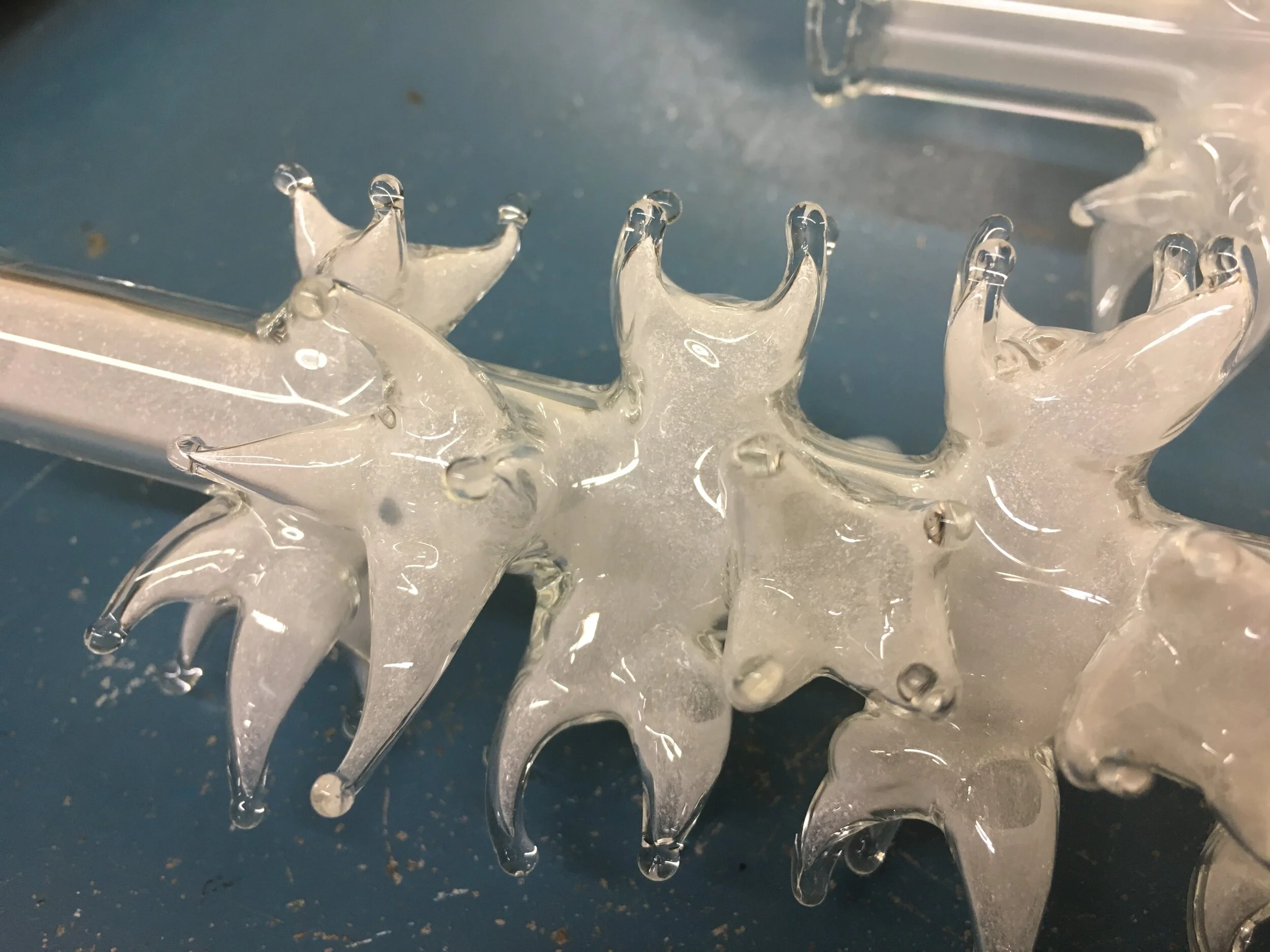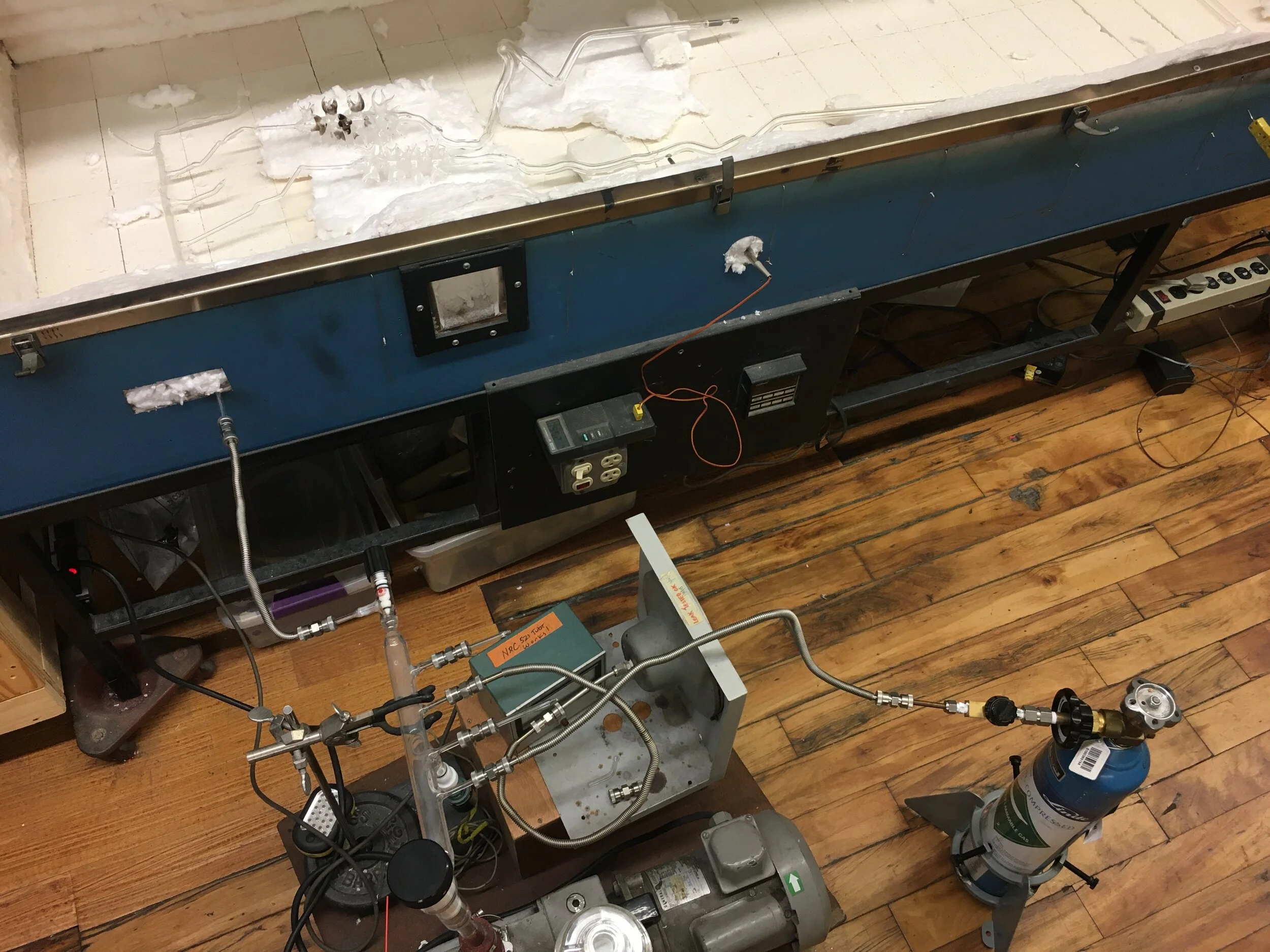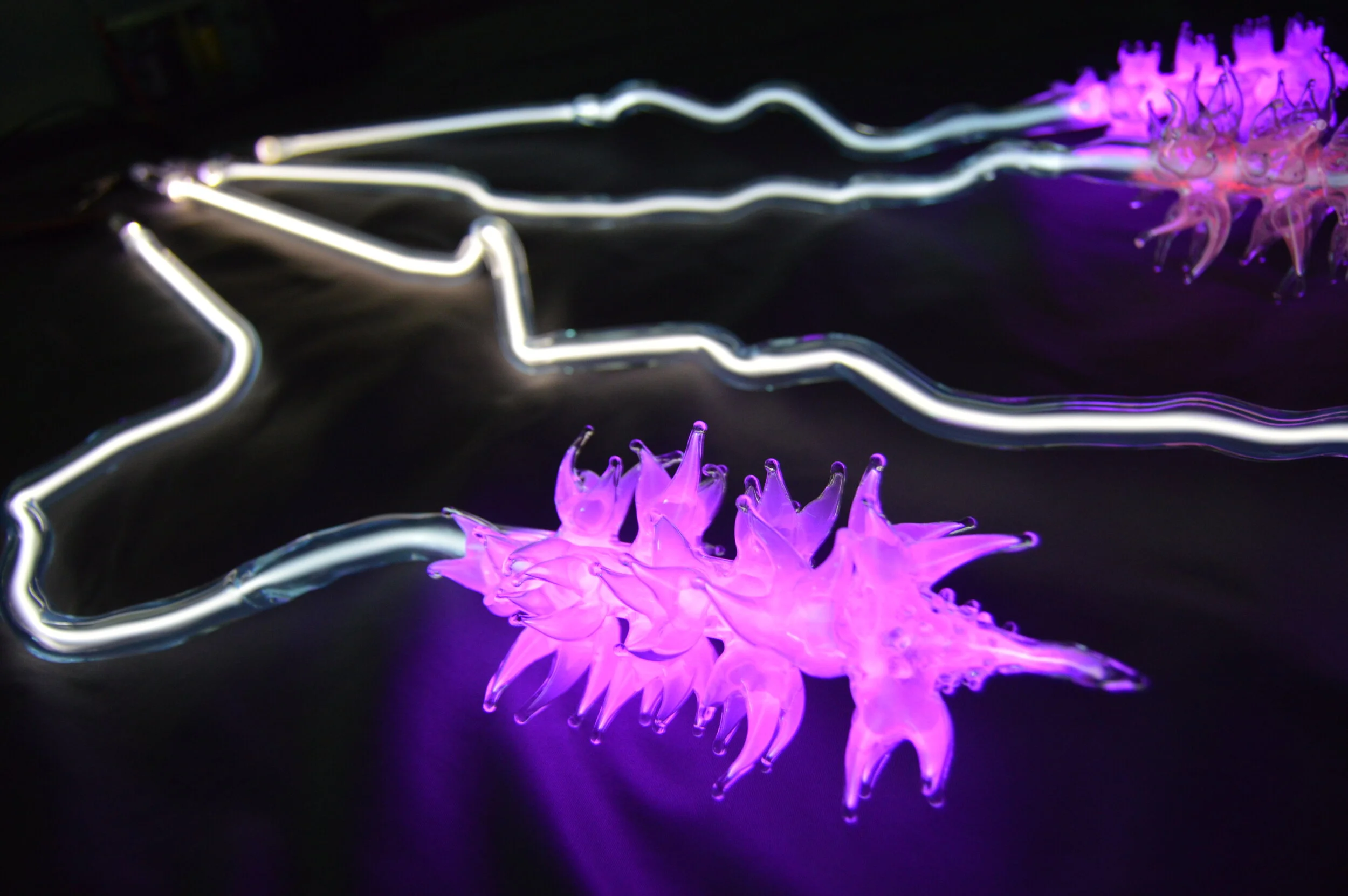Glass and Plasma Flowers
I’ve been busy making several lighted plasma flowers for an upcoming group show, so some of my other sculpture projects have had to wait—but this has given me some good practice! Sometimes repetition is key in practicing glass sculpting, and I found it helpful to focus on making multiples of the same flower shapes. These flowers are intended to be an improved design of some similar ones that I first made last year.
I documented some different stages of the process, which started with making the flower shapes in flameworked borosilicate glass, applying a phosphor coating, then connecting these to long pieces of glass tubing to make the stems. Each stem has an electrode at the bottom that will connect to a high voltage high frequency power supply. After shaping the glass I kiln annealed it and connected the sculptures to a vacuum pump and manifold system to fill each of the the evacuated shapes with krypton gas.
The flameworked flowers and stems before assembly:
Here are the flowers after coating the inside of the glass with phosphor powder, which looks white right now but when the flowers are lit up, they will glow purple (and one of them red). I mix the phosphor powder with sand, shake the mixture around inside the glass and then pour the sand out, leaving the phosphor powder coating.
Then I used a hand torch to connect the flowers to the stems and bend the stems into organic, wavy shapes:
Some photos of the process of vacuum pumping, gas filling, and lighting the sculptures:
(As with all of my plasma projects, thank you to Wayne Strattman for the use of the kiln and vacuum manifold!)
And finally, the finished flowers, lighted:
One flower did not make it to the end of the process (nothing about this is easy!) But even if I can’t fix that last one, I still have a group of four as shown in these photos. The flowers are filled with krypton gas at a very low pressure, which gives a bright white glow inside the clear glass, and also makes the phosphor coating glow inside the flowers. I really like the effect of this purple phosphor, I used this color before when I made the original flowers and it always turns out very bright. The red was an experiment with a phosphor I haven’t used before, and if I use it again I will need to apply a thicker coating to make it brighter, but this more subtle glow still gives an interesting effect to the flower: the white krypton makes a thin glowing line inside the point of each flower petal.
I’m going to display these sculptures with the lower part of the stems buried in a large container of sand, which will give the appearance of real flowers growing out of the earth. The sand will support them and hide the wiring, and the flowers can be adjusted in different arrangements while also remaining as separate individual sculptures.





















